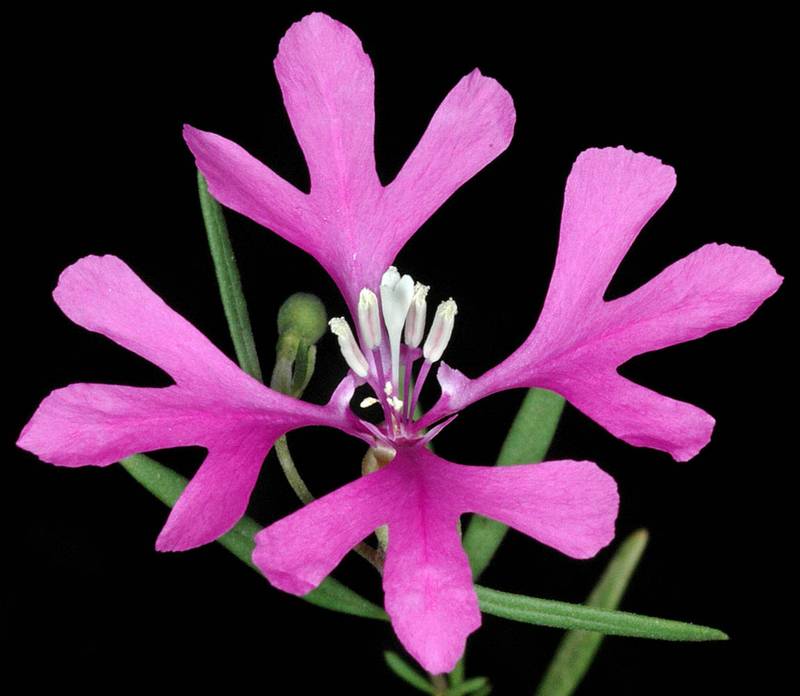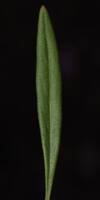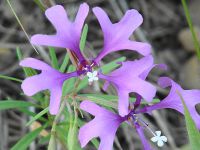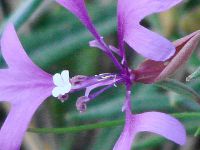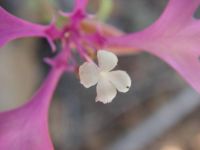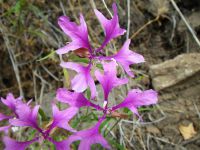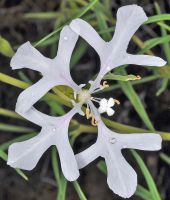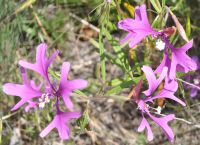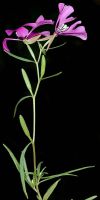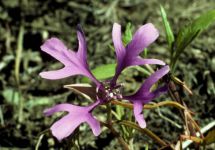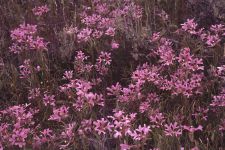Distribution: Occurring east of the Cascades crest in Washington; British Columbia to Oregon, east to South Dakota.
Habitat: Dry, open slopes, low to middle elevations.
Flowers: May-June
Origin: Native
Growth Duration: Annual
Conservation Status: Not of concern
Pollination: Bumblebees, bees, flies, beetles, moths, wasps
Annual, the stem 1-5 dm. tall, simple or freely-branched, covered with fine, appressed hairs.
Leaves alternate, sessile, linear-lanceolate to spatulate, entire to denticulate, 2-7 cm. long and 2-10 mm. broad.
Flower in a few short racemes, slightly irregular; buds nodding, calyx tube 1-3 mm. long, the 4 lobes fused and turned to one side; petals lavender to rose-purple, 3-lobed, the middle lobe the widest, the base narrowed to a slender claw with a pair of opposite, blunt teeth near the base; fertile stamens 4, vestigial stamens 4; style 4-parted, stigmas 4, oval-oblong, 1-3 mm. long, white; ovary inferior, 4-celled.
Capsule 4-celled, 2 cm. long, straight or curved.
Publication: Flora Americae Septentrionalis; or, . . . 1: 260-261, pl. 11 [1813]. 1814.
PNW Herbaria: Specimen records of Clarkia pulchella in the Consortium of Pacific Northwest Herbaria database
WA Flora Checklist: Clarkia pulchella checklist entry
OregonFlora: Clarkia pulchella information
E-Flora BC: Clarkia pulchella atlas page
CalPhotos: Clarkia pulchella photos

